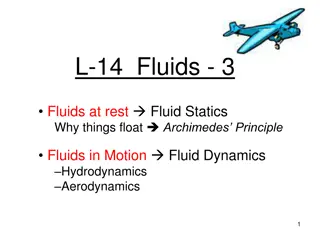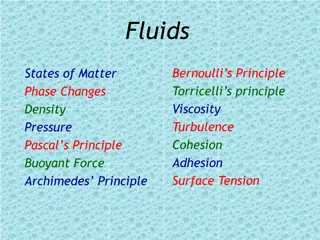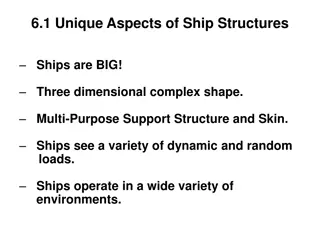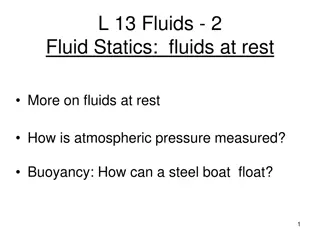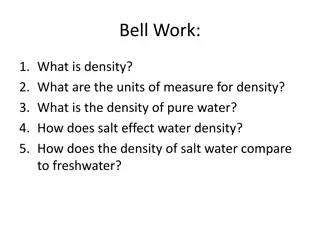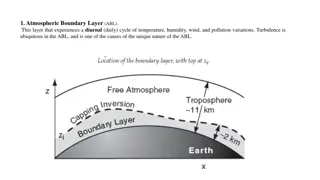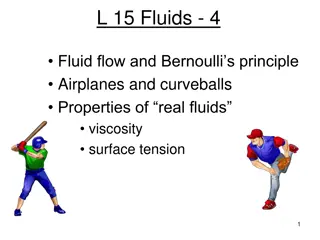Understanding Buoyancy and Archimedes' Principle
Buoyancy is the upward force experienced by a body when immersed in a fluid, counteracting gravity. This force is determined by Archimedes' principle, which states that the buoyant force is equal to the weight of the fluid displaced. For floating bodies, the weight of the body equals the buoyant force, which is the weight of the fluid displaced by the submerged portion. The center of buoyancy corresponds to the center of gravity of the displaced fluid volume.
Download Presentation

Please find below an Image/Link to download the presentation.
The content on the website is provided AS IS for your information and personal use only. It may not be sold, licensed, or shared on other websites without obtaining consent from the author. Download presentation by click this link. If you encounter any issues during the download, it is possible that the publisher has removed the file from their server.
E N D
Presentation Transcript
Buoyancy Whenever a body is immersed wholly or partially in a fluid; it is subjected to an upward force which tends to lift (or buoy) it up. This tendency for an immersed body to be lifted up in the fluid is due to an upward force opposite to action of gravity is known as buoyancy. The magnitude of the buoyant force can be determined by Archimedes principle which states as follows: "The buoyant force acting on a body immersed in a fluid is equal to the weight of the fluid displaced by the body, and it acts upward through the centroid of the displaced volume."
For floating bodies, the weight of the entire body must be equal to the buoyant force, which is the weight of the fluid whose volume is equal to the volume of the submerged portion of the floating body. That is It follows from these discussions that: a body immersed in a fluid
Centre of Buoyancy It is always the centre of gravity of the volume of fluid displaced.






